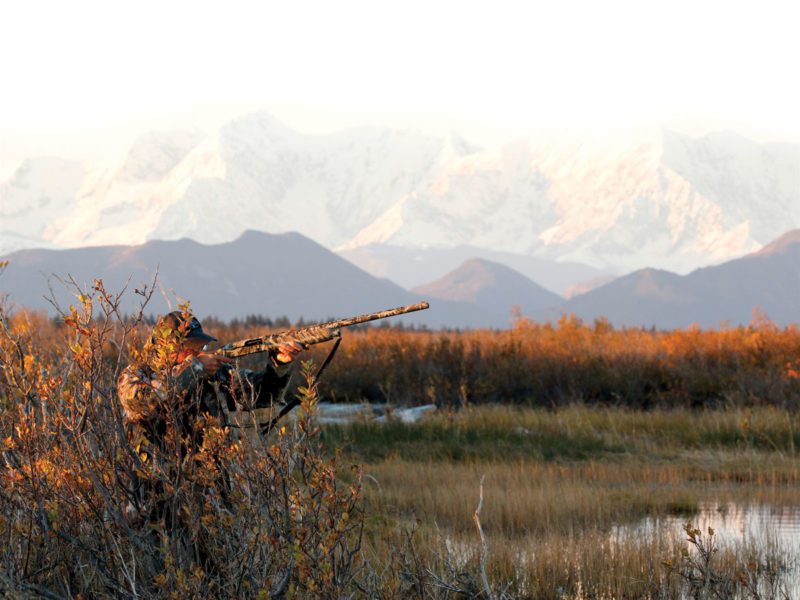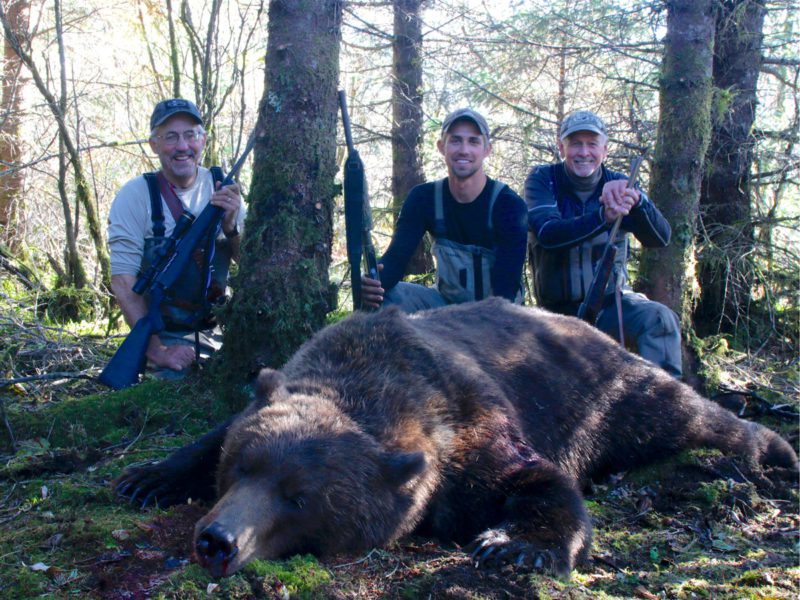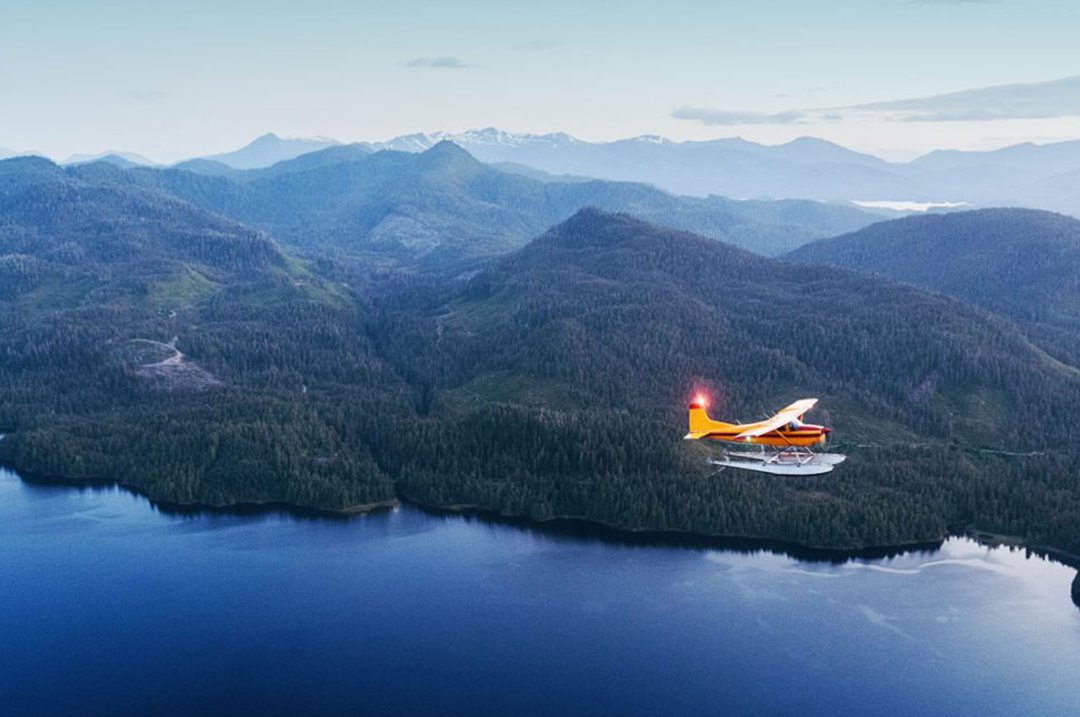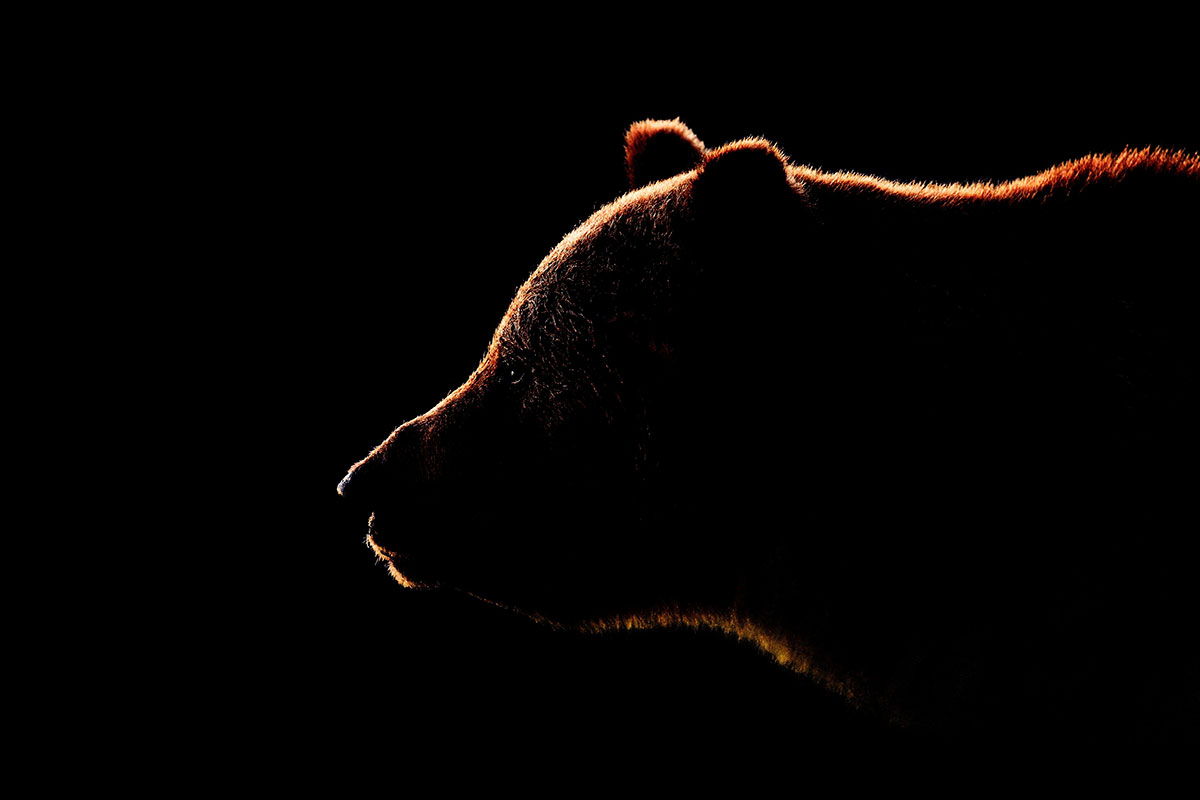You can do it all on Alaska’s rivers as long as you’ve got the right outfitter and guides.
The idea is traditional. Go to the wilderness. Fish and hunt. Everything. Moose. Bears. Waterfowl. Salmon. Whatever pops up. It’s what sportsmen used to do. It’s what they would still do—if governments allowed.
Alaska allows.
“Rifle! Your bear rifle!” Charles hissed, palming the come-hither signal with an urgency that clearly said, “Get your asses over here, Cheechakos!”
Tom laid his duck gun in the rain-slicked boat as quickly as he could without precipitating a metallic, bear-spooking clunk. He pulled out his .338 Winchester Magnum, tipped its muzzle down to drain, and slipped over the gunnel. The widgeon we’d been waiting for banked off the port bow and a salmon erupted near the bank. Forget them. Charles had a bear.
I got this friend who’ll take us fishing and bear and moose hunting in Alaska,” Tom Claycomb had told me in the spring of 2016.
“Ha! Do you know how much Alaska bear and moose hunts cost these days?”
“Nothin’.”
“What?”
“He said no charge.”
Now Tom is true-blue honest, guileless, and a trifle too trusting of his fellow man. Or shall we say gullible? We were far from Denmark, but this deal had an odor. After considerable nosing about, I discovered it was rather like blue cheese, tasting better than it smelled.
Charles Allen proved to be a wildlife biologist, a Master Guide, and proprietor of Driftwood Lodge, a salmon-fishing camp perched within a mile or two of Vitus Bering’s first contact with Alaska. Bering anchored for one day as his sailors went for fresh water. He didn’t even step ashore.
Allen not only stepped ashore, but bought a chunk of it. Then he hand-built a classic log lodge from driftwood he dragged off the beach. That was a quarter-century ago. Today Allen, in his mid-60s, is still tough and wiry and a nice mix of intelligence, experience, caution, and raw energy. He owns and manages Knives of Alaska, as well as the cutting-edge Diamond Blade Knives company. He’s less interested in battling wind, rain, and out-of-shape big-game hunters than in hosting fishing clients. Nevertheless, he still likes to indulge in a bear or moose hunt with friends each fall so he can test his latest knives. He offered to try them out on my moose and Tom’s bear. You don’t turn down a friendly invitation like that.
“You can enjoy a good breakfast and get back for a gourmet dinner and hot shower every day,” Tom explained about fishing for silver salmon at Driftwood Lodge.
“Doesn’t sound like my kind of fishing experiences,” I complained. “But I’m willing to suffer.”
We flew up in late September to catch the heart of the silver run, which lures hungry anglers from the Lower 48 and hungrier bears from the snow-shrouded Wrangle Mountains towering to the north. The bears pad right to the beach at first, but as the run progresses, they’re able to catch their protein farther and farther upstream where alders entangle the banks.
“Why don’t you boys get your feet on the ground, catch a few fish, shoot a few ducks, get acclimated for a couple of days,” Allen suggested on our first evening in camp. “I’ll finish up a moose hunt with my friend Jack Fenwick, and then we’ll regroup.”
The salmon fishing was ridiculous, as only Alaskan salmon fishing can be. A couple of Canadian cousins were competing to see who could land the greatest number of eight- to 16-pound salmon each day. The winner hit 75. The only numbers Tom and I counted were the pounds-test we were trimming from our leaders. Even with our stout, 9-foot, 9-weight, Cabela’s TLR Salt rods, those silvers weren’t coming to bay on the end of a 10-pound tippet.
When Tom hooked his first fish, I backed off to give him fighting room. With time to kill, I waded ashore to indulge a cup of hot coffee and a fresh-baked pastry.
Allen recruits college students majoring in fisheries or wildlife sciences to guide his clients. These young men understand hard work and customer service. In addition to providing coffee and hot lunches, they land and release fish, provide flies, tie them on if you’d like, and even recommend catching techniques if you ask. Hand them your rod and they’ll quietly show you how to cast. I had as much fun visiting with these guys as I did fishing.
Coffee break concluded, I started back into the river only to realize Tom was fighting that same fish.
“You’re going to have to pay him overtime!” I teased.
When the silver finally surrendered, Tom cut back his tippet. By the end of our trip, we were manhandling 16-pound silvers at the ends of 4-foot, 30-pound leaders—and those fish still screamed downriver and dragged deep into our backings. A day of this and I was ready for another relaxing duck hunt.
“Behind us!” our young guide Jordan Wenkman yelled. A trio of widgeon curled behind Tom’s back, angling for the decoys. One dropped in for a closer look. Its last.
As Jordan waded out for the retrieve, Tom casually thumbed a fresh round into his 12 gauge.
“Dang, where’d those come from?” he asked.
“Eggs,” some wiseass quipped.
I’d be lying if I said the flights came fast and furious. Alaska ducks are as fresh and gullible as any in North America, but our first good morning was followed by a poor one. It’s tough calling birds on their nesting territories and not yet beholden to the flocking instinct. We sweet-talked with my Sure-Shot Yentzen double reed, but even its authentic, raspy hen tone didn’t seem to impress the widgeon, teal, and mallards.

Tom Claycomb swings on a flock of widgeon coming into a wilderness pond where the mud was pocked with the tracks of brown bears.
As if that wasn’t challenge enough, there were landscape distractions. Trust me, umber sedges edging a silver-gray pond fronting dark foothills backed by massive mountains of snow—that’s enough scenery to distract one from detecting distant ducks. Then there was that crippled decoy with disconcerting tooth punctures. Bear-sized. Just a foreshadowing of what might respond to our calls.
“First time I ever stepped over the remains of a bear’s breakfast on a duck hunt,” Tom observed as we carried our morning’s haul ashore. The sedges were littered with salmon skeletons, the mud pocked with bear tracks. Our enthusiasm for waterfowling was waning, but right on schedule. Jack Fenwick had shot a moose. Our bear hunt was on.
“Load,” Allen whispered as Tom and I left the rain-soaked boat. Assistant Guide Austin Wiersma silently tied it to an alder, shouldered his .375 H&H backup rifle, and slipped in behind us. Allen led the way into the swamp with his custom .411 KDF, the battered rifle he’d once used to stop a brown bear charge at 12 feet. Feet!
Mud sucked and slurped at our boots, but the crash of rain covered the noise. Allen slowly picked a path, weaving around limbs matted with bright-green moss, avoiding thickets that would impede a rifle’s swing. Tom gripped his Mossberg .338 Winchester Magnum, the Leupold set on its lowest power, probably wondering if his Federal 250-grain Partition loads were adequate.
Many Alaskan brown bears have bested .375 H&H Magnums, .416 Rem. Mags., and .458 Win. Mags., but plenty others have expired at the slap of a .270 Winchester, too. Shot placement and a controlled-expansion bullet like the Partition seem more significant than horsepower. We’d see . . . and soon.
Allen was crouched and pointing, Tom aiming.
“Wait! Wait!” Allen whispered as loudly as he dared.
Tom raised his head off the stock. Too many bears. A sow was on the gut pile, along with two cubs her size or larger. From the left came another sow with a smaller cub hanging back. And then the head of a large bear popped up. Wide head. Short ears. Boar.
“Something’s not right,” Allen whispered. We were a hundred yards from the feast, wind in our favor and steady, a big spruce tree at our backs. “Let’s study this. I’ve never seen this many bears on a kill.”
We glassed. We watched. We climbed the tree for a different angle. Ravens croaked and flushed. Magpies swooped and whined. Bald eagles and gulls winged overhead as bears lumbered in and out of the brush. Discretion being the wiser part of valor, we backed out. Perhaps overnight the bears could sort things out. Ideally, a monster boar would settle in.
The next morning we again motored up the busy river, wading and pulling through the shallows. Salmon roiled and squirted ahead. A bear walked out on a spruce snag stretched into the current. Herons squawked and flapped from the sedges. Mergansers pattered into flight, and long skeins of sandhill cranes cruised under the pristine ramparts of the mighty Wrangles.
“Let’s hope a big boar has found and claimed that gut pile,” Allen said. “I’m sure that biggest bear yesterday was a boar, but sows with cubs shouldn’t have been putting up with him.”
“Unless the sow was in heat—or one of her cubs?” I pondered.
“Maybe, but still doesn’t make sense.”
“The cubs could be old enough that she doesn’t need to defend them anymore?” Tom offered.
“I’d feel better if we found a lone boar.”
We didn’t. A sow was again on the moose remains. We backed out and continued upriver, finding another sow with two big cubs prowling the banks. Farther up, a young boar came feeling his way downriver, up to his neck, pulling up spawned-out salmon and eating them like a squirrel gnawing a nut. Gulls swirled in his wake, nipping scraps. When the boat could go no more, we waded up and around bends, through congregations of splashing, spawning salmon, their red backs above the flow, bald eagles evaluating them from the bank.
Louder splashing then from upstream. Two bears in the river, wrestling. Siblings. Play-fighting. Amid this domestic tranquility, an ornery, anti-social old boar wasn’t likely. We headed back, finding four more bears working the stream. Brown bear densities reach impressive levels on salmon streams in September. The smorgasbord is open, the price is right, and the bears’ need for fat borders on desperate. Many double their weight prior to their long winter’s nap.
We continued to search the streams, sometimes breaking to fish, once to shoot a few more ducks, sometimes to call moose. Austin had found a moose antler in the swamp. Allen whacked it with a plywood paddle he carried for raking and slapping brush in imitation of a rutting bull, augmented by loud moans like a cow desperate for attention.
“They’ll come as far as a mile,” he said about the bulls. But they have to be within a mile first, and the one that had been was already hanging in the cooler.
Bears, however, continued to wade into our adventure, an average of eight each day. A sow with three 2-year-old cubs padded down the bank, the family disappearing and reappearing, poking their noses from the tangles, splashing into the river and back out, moving steadily toward the four of us sitting on the bank.
“Let’s go!” Allen directed, and we hustled to the boat, shoving into the current before the bears tumbled into our laps. No one wanted an altercation with an angry sow, and even if we didn’t have to fight off a charge, we gained nothing from spooking the group. Keep things calm. Slow and steady, drifting through the bears’ wilderness like smoke.
It happened the last day, of course. I’d already given up hope, figuring the ornery old boars, like the moose, were staying farther upriver than we’d penetrated. Allen knew better. That final morning, frosty with the sun slowly climbing and just the lightest breeze slipping downriver with the mergansers, we sat where the sow with triplets had run us off.
With little hope of seeing a moose, I leaned my Mossberg .375 Ruger against a willow and fiddled with my video camera, admiring the wilderness scene before me. No farms, industry, dams, not even a road or electric line. The river rolled by, carrying last winter’s snow from the lower reaches of the even wilder Wrangles, where Dall’s sheep grazed and mountain goats climbed. Wolves coursed caribou and lynx cats padded after snowshoe hares. Here was the American wilderness intact, our hunters’ heritage, where a man or woman, legally licensed, is still free to boat, hike, wade, fish, climb, camp, and hunt, eating what he takes as he goes.
I framed the river in my camera and hit record as a raven flew in, animating the scene with its lonely flight above that empty river . . . above that bear walking its shore.
“Bear! Bear coming downriver!” Tom and Allen craned their necks. The bruin sloshed past the last shrub blocking their view, and Allen raised his binocular.
“Good bear!” I heard him whisper to Tom. “That’s your bear. That’s a good bear. Get ready.”
The camera rolled, the bear kept coming, and Tom kneeled behind his shooting sticks, rifle leveled, waiting.
“Let him come. Let him come. See that big belly? See how it hangs down?”
If not for the hump, the mass, and the fact that this was brown bear country, I’d have sworn this was a black bear, so dark was its coat. Thick. Fat. Chunky. This was a prime boar. His fur rippled as his muscles bunched in his shoulders. He disappeared behind a small island. Tom shifted his aim. I shifted the camera. The bear emerged, still in the water, angling toward shore.
Tom’s 250-grain Partition blew a silver geyser from the bear’s shoulder. It lurched forward, heaving its bulk and a bathtub of water onto the bank. Its leg was dragging. The alders closed around it. Gone. Once again the wilderness was silent, the river whispering. Distant gulls cried. A flock of mergansers flew over, their heads and beaks like arrows shot toward the coast.
“What just happened?” Tom asked. “Was I seeing things? One second it was an empty river, the next second . . .” He stared upstream.
“You just got your bear, Tom. You just got your bear.”

Tom Claycomb (left) dropped this huge brown bear with just one bullet from his Mossberg Patriot in .338 Win. Mag. With him are guide Austin Wiersma and Charles Allen, owner of Alaska Expedition Company.
GEAR TESTS
Alaska is always a great place to test gear, but an unforgiving place to get stuck with bad gear. We took no chances and went with the following:
Diamond Blade Knives: Charles provided blades for all occasions. I was most impressed with the balance and handling of his Diamond Blade Summit and Pinnacle II with stag handles. The unique steel in these knives is Friction Forged, a process that uses extreme pressure and heat to make “nano-sized” steel-grain microstructures to produce what Allen describes as “the finest cutting edge known to man.” Independent tests have shown the blades to hold their edges longer than a dozen other popular, high-quality knife steels. We shaved arm hairs with them before and after skinning the bear.
Mossberg Patriot rifles: Mossberg’s latest bolt action is nothing fancy, but it’s tough, reliable, and not afraid to run in the rain and spray and bounce in the bottom of an open boat. My laminated Marinecote model emerged rust-free after ten days of wind, sand, rain, and more rain. The only maintenance I gave it was a nightly drying in our cabin and a couple of passes down the bore with an oiled patch on an Otis cable. My only regret is that moose didn’t get the memo. I didn’t get to test the 300-grain Speer Grand Slam bullets Massaro Ballistic Labs had loaded for me on anything but a cardboard box.
Mossberg 930 Pro Series Waterfowl shotguns: Another tough, reliable, virtually waterproof workhorse in Mossy Oak Shadowgrass Blades camo. Tom fell headfirst into a flooded bear hole, poured the water from his 930 and kept right on shooting ducks. He did mention feeling a bit chilly after an hour.
Leupold VX-3i 2.5-8×36 scope: Light, compact, sharp, and famously rugged. Just the ticket atop a .375 Ruger targeting a moose. Tom went with a 3.5-10×40 in case he found himself needing to reach out with his .338 Win. Mag., but his shot was no more than 140 yards. We both carried Leupold BX3 Mojave roof-prism binoculars—impressively sharp, bright, and light in weight.
Federal Black Cloud steel 3-inch #4s and #2s: The name sums it up. A regular cloud of steel pellets, more than sufficient for early season puddle ducks.
Simms G3 Guide Stockingfoot Waders with G3 Guide Boots: I’ve been fishing with an original Simms GoreTex wader for years, and it’s still keeping me dry. These beefed-up G3s proved bomb-proof but not blade-proof. After nipping a small gash through mine (Diamond Blade knives really are scary sharp,) I applied the supplied repair patch and sailed along dry as sage in August. Both wader and boots were ridiculously comfortable and functional. With a Simms’ Slick Jacket over the top, I was virtually impervious to moisture from any direction. Simms gear makes Alaska coastal rain merely an observable change in the weather.
ALPS Extreme Pursuit X pack: You simply have to have a pack for hauling your daily needs. The Pursuit is a perfect carry-on size for stuffing all you need to survive comfortably in camp for a few days if your checked bags don’t make it. Alas, it is not waterproof, but we fixed that by stuffing it in a heavy-duty garbage bag. Knowing now how we were tied to the boat, I’d choose the waterproof Crusader X duffel for a hunt like this.
ALASKA BEARS: Stirred and Shaken is a collection of 24 stories describing Jake’s personal experience hunting and guiding for all the species of bears in Alaska. Bear biology, hunting techniques, cabin depredations and avoidance thereof, and other aspects of bear pursuits are detailed. These are true stories except for the names of some of the hunting guests from Jake’s fifty years of living and hunting in Alaska. Buy Now





